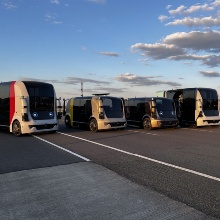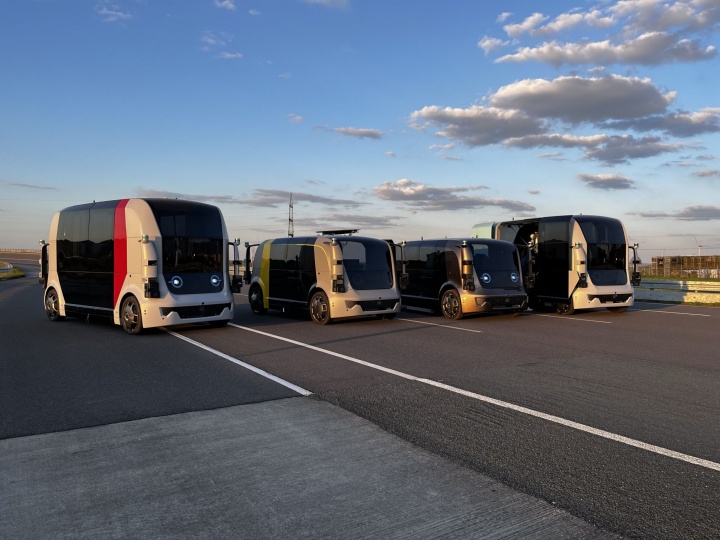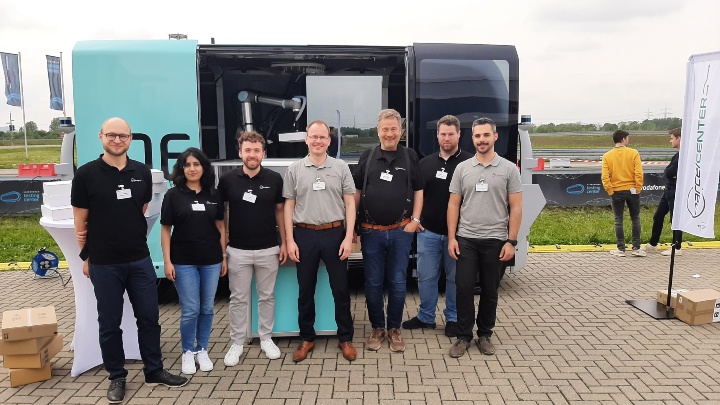Driverless and automated electric vehicles that agilely adapt to the environment and whose components operate like modules in IT services – that was the aim of the UNICARagil research network, in which the Institute of Automotive Engineering (IFS) at the University of Stuttgart was also involved. At a closing event in May 2023, the consortium of eight universities and nine companies presented four vehicle prototypes that are capable of fully autonomous driving. The prototypes show how future mobility can be successfully achieved, while performing complex tasks from both private and public transport as well as freight transport.
Automated and connected vehicles will play a key role in meeting the challenges posed by a growing demand for mobility and advancing urbanization. They create the basis for sustainable and intelligent road traffic, novel mobility and transportation concepts, and improvements in road safety and quality of life in urban and rural areas.
However, vehicle concepts suitable for this purpose require much more powerful and updateable information processing in the motor vehicle, which is achieved with only limited success in the further evolutionary development of existing systems and concepts that have predominated in the automotive industry to date. Therefore, the UNICARagil project, funded by the Federal Ministry of Education and Research (BMBF) with about EUR 32 million, involved a revolutionary rethink of the vehicle itself, its development, and the underlying architectures.
Through the cooperation of specialized companies and leading German universities in the field of automated driving, the aim of the project was to create the foundations for a user-centered concept of driverless driving that is geared toward human capabilities. The project team deliberately refrained from converting or upgrading current vehicles that basically consist of a chassis, a power train, and a body. Instead, the consortium developed a completely new vehicle structure that combines the chassis and the drive train into four dynamic modules, each of which drives, guides, steers, and brakes a single wheel. These modules are connected to each other via a driving platform, which, thanks to the innovative wheel guidance system, can also steer all wheels by 90° and thus easily fit sideways into the smallest parking spaces.
A flexible modular concept
The cabin placed on the driving platform is individually designed according to the intended use of the vehicle. This modular concept allows maximum flexibility in interior design with minimal development effort for future mass production. Automating a vehicle in a meaningful way requires not only a wide range of sensor technologies, but also a modular control intelligence.
In addition to the development of generic sensor modules, the research also focused on environment recognition, a flexibly extensible and updateable software and hardware structure as well as the networking and safeguarding of all these elements. Similar to the human brain, the UNICARagil prototypes are not based on a central computer, but on a computer architecture that works at several levels. This computer architecture connects the so-called cerebrum with the brain stem and the dynamics modules, thus providing multiple protection for all tasks that arise. It is service-oriented and allows agile updates that are integrated at runtime. The functional architecture also includes a cloud, where the actual learning from “experience” takes place, the road infrastructure such as sensors at traffic lights, and so-called “info bees”, which are small automated aerial vehicles. The networking between these components enables the vehicles to interact with conventional cars and commercial vehicles in a predictive and safe manner, even in confusing traffic situations.
Six areas of responsibility at the University of Stuttgart
The Institute of Automotive Engineering (IFS) at the University of Stuttgart was responsible for the following tasks in the UNICARagil project:
- Management of the Mechatronic Architecture work package
- Ethernet-based vehicle network architecture
- Modular zone-based and failsafe power supply
- Stations for wired charging by means of direct current as well as inductive charging including independent localization of the primary coil by the vehicle
- Hardware for the “brain stem” control unit as part of a redundancy system throughout the vehicle
- A thermal management system for cooling the E/E components and for air conditioning in the vehicle interior
From delivery truck to family car
At the public closing event, the consortium demonstrated the flexibility of the four driverless vehicle prototypes using different applications: The autoCARGO demonstrates fully automated parcel delivery, the autoTAXI shows how, in the future, individual motto cabs can enable passengers to attend private or business meetings while driving to the train station. The autoSHUTTLE is a flexible addition to public transportation in rural areas, and the autoELF vehicle model represents a private and customizable family car.
Expert Contact:
Dr. Dan Greiner, University of Stuttgart, Institute of Automotive Engineering, phone: +49 711 685 65743, E-Mail




